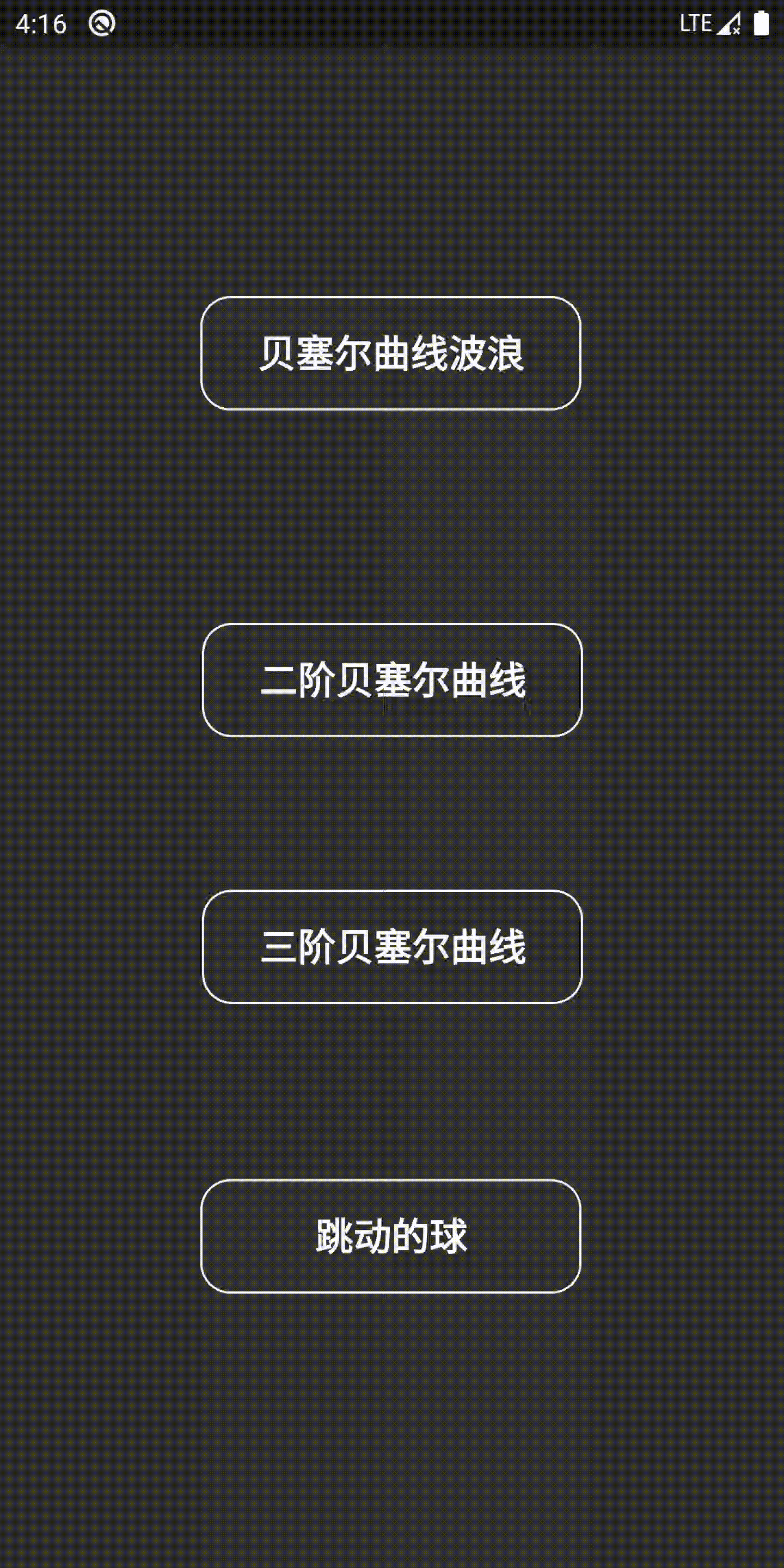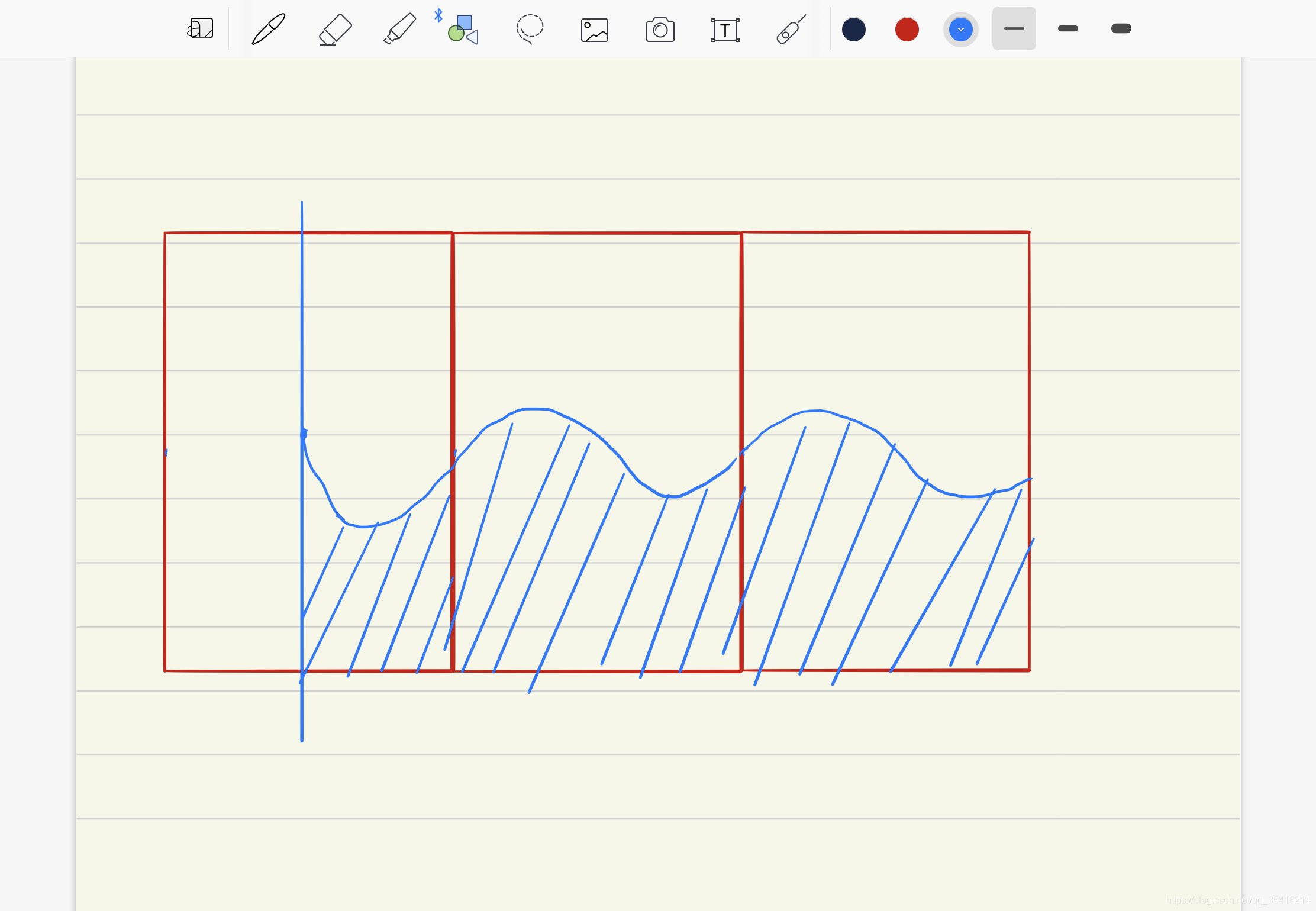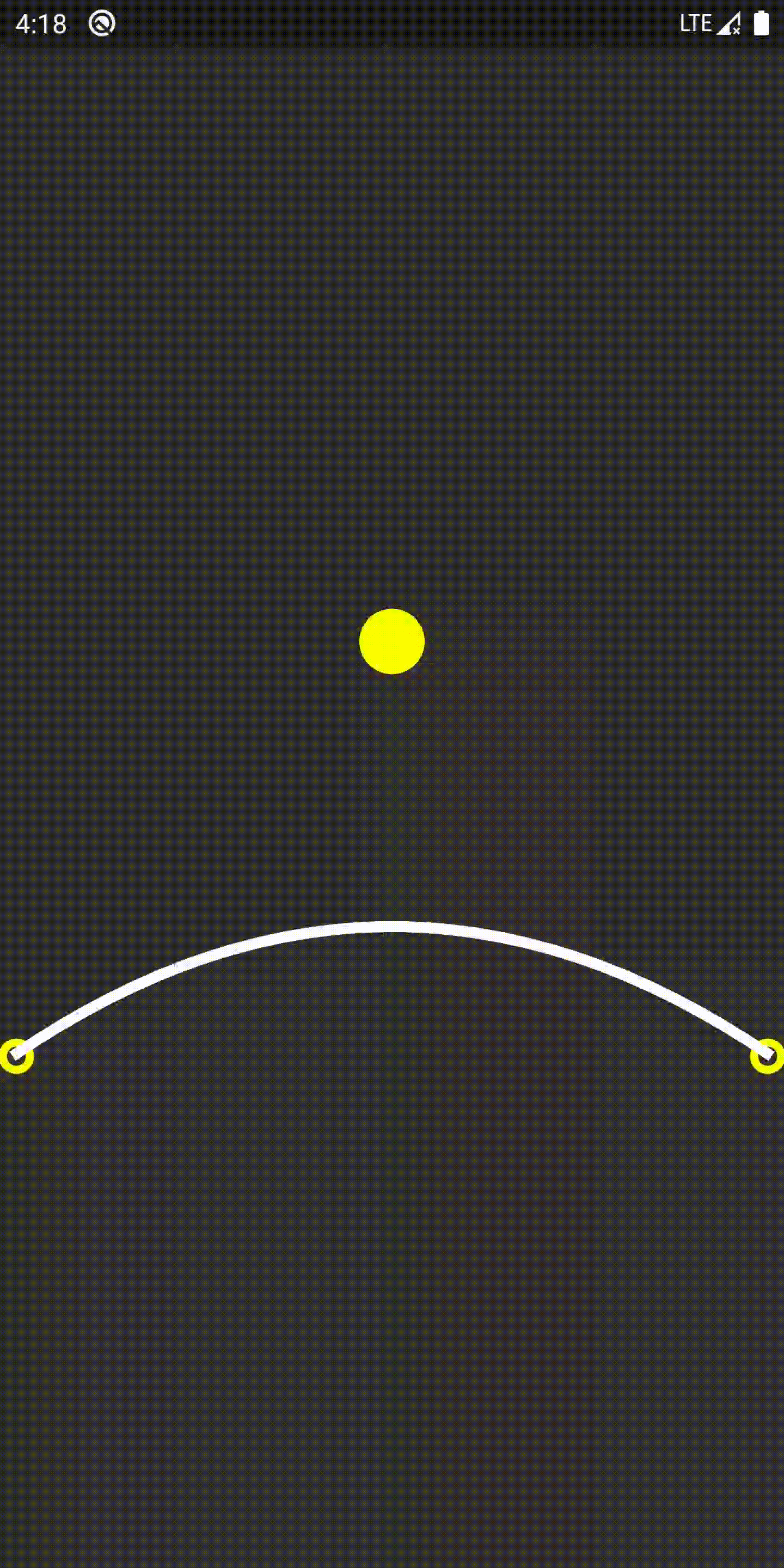上文说了什么是贝塞尔曲线,和如何利用AndroidApi绘制出贝塞尔曲线。
那么这节我们就来实现几个进阶的贝塞尔曲线动画。
1.流动的波浪
演示效果图:

实现思路:
将屏幕宽度分为4份,其中1/2为一个波长,一个波长(0-》1/2)必有一个波峰,一个波谷。()一个波长利用贝塞尔曲线绘制)从屏幕左侧外面多出3/2个波长绘制,设置动画(移动控制贝塞尔曲线的固定点和控制点达到平移波浪的效果)无限次循环,开启动画。

代码实现:
绘制封闭波浪
@Override
protected void onDraw(Canvas canvas) {
Path path = new Path();
int itemWidth = weight / 2;
path.moveto(-3 * itemWidth, height / 2);
for (int i = -3; i < 2; i++) {
int controlX = i * itemWidth;
path.quadTo(itemWidth / 2 + controlX + offset, getWaveHeight(i), controlX + itemWidth + offset, height / 2);
}
path.lineto(weight, height);
path.lineto(0, height);
path.close();//封闭区间
canvas.drawPath(path, mWaveViewPaint);//画路径
}
//根据给定的i 确定是波峰还是波谷
private int getWaveHeight(int count) {
if (count % 2 == 0) {
return height / 2 - 170;
}
return height / 2 + 170;
}
开启动画
/**
* 开启动画
*/
private void start() {
isstart = true;
if(onStartListener!=null){
onStartListener.onIsstart(true);
}
animator = ValueAnimator.ofFloat(0, weight);
animator.setInterpolator(new LinearInterpolator());
animator.addUpdateListener(new ValueAnimator.AnimatorUpdateListener() {
@Override
public void onAnimationUpdate(ValueAnimator animation) {
float animatorValue = (float) animation.getAnimatedValue();
offset = animatorValue;
postInvalidate();
}
});
animator.setDuration(1500);
animator.setRepeatCount(ValueAnimator.INFINITE);//重复执行 无限次数
animator.start();
}
暴露接口
public interface onStartListener {
void onIsstart(boolean isstart);
}
public onStartListener onStartListener;
public void setonStart(onStartListener onStartListener) {
this.onStartListener = onStartListener;
}
/**
* 关闭动画
*/
public void stop() {
isstart = false;
if(onStartListener!=null){
onStartListener.onIsstart(false);
}
animator.cancel();
}
public void isstart(){
if(isstart){
stop();
}else{
start();
}
}
2.下落的弹球
演示效果图:

实现原理:
绘制小球及绳子(绳子利用贝塞尔曲线绘制)准备工作,小球加速下降,降到和绳子平行时,绳子随小球一起下降,下降到最低点,小球反弹绳子接着也反弹减速向上,小球脱离绳子后绳子回到初始位置。这里无非就是利用AccelerateInterpolator()控制加速运动,DecelerateInterpolator()控制减速运动。修改贝塞尔曲线的控制点达到修改绳子位置,没什么说的十分简单。
代码:
绘制
@Override
protected void onDraw(Canvas canvas) {
canvas.drawCircle(30, height / 2+500, 25, mLineCirclePaint);//绳左球
canvas.drawCircle(width - 30, height / 2+500, 25, mLineCirclePaint);//绳右球
canvas.drawCircle(width / 2, height / 2+500 + mballControlly, 60, mballPaint);//画下落的球
/*贝塞尔曲线绘制绳*/
mPath.reset();
mPath.moveto(23, height / 2+500);
mPath.quadTo(mLineControllx, height / 2+500 + mLineControlly, width - 23, height / 2+500);
canvas.drawPath(mPath, mLinePaint);
}
动画
/**
* 运行动画
*/
public void startAni() {
//加速插值器
downAnimator = ValueAnimator.ofFloat(mballMaxy, mballMiny);
//球加速下降 当球下降接触到绳时 绳也下降
downAnimator.setDuration(1500);
downAnimator.setInterpolator(new AccelerateInterpolator());
downAnimator.addUpdateListener(new ValueAnimator.AnimatorUpdateListener() {
@Override
public void onAnimationUpdate(ValueAnimator animation) {
mballControlly = (float) animation.getAnimatedValue();
if (height / 2 + mballControlly >= height / 2) {
mLineControlly = (float) ((float) (animation.getAnimatedValue()) * 2.5);
}
postInvalidate();
}
});
downAnimator.start();
downAnimator.addListener(new AnimatorListenerAdapter() {
@Override
public void onAnimationEnd(Animator animation) {
startUpAnimator();
}
});
//球和绳减速上升 当绳超过反向mballControlly 时球绳分离
//减速插值器
upAnimator = ValueAnimator.ofFloat(mballMiny, mballMaxy);//300->-900
upAnimator.setDuration((long) (1500*0.7));
upAnimator.setInterpolator(new DecelerateInterpolator());
upAnimator.addUpdateListener(new ValueAnimator.AnimatorUpdateListener() {
@Override
public void onAnimationUpdate(ValueAnimator animation) {
float animatedValue = (float) animation.getAnimatedValue();
mballControlly = animatedValue;
if(mballControlly+height/2>=height/2+mballMaxy*0.4&&mballControlly<150){//小球先上升后绳在上升
mLineControlly=animatedValue;
}/*else if(mballControlly+height/2<height/2+mballMaxy/3) {
mLineControlly = -animatedValue / 2;
}*/
if(animatedValue<=-898){//执行完毕 绳回到中心点
mLineControlly=0;
}
postInvalidate();
}
});
upAnimator.addListener(new AnimatorListenerAdapter() {
@Override
public void onAnimationEnd(Animator animation) {
startDownAnimator();
}
});
}
/**
* 开始反弹
*/
public void startUpAnimator() {
if (upAnimator != null && upAnimator.getValues() != null && upAnimator.getValues().length > 0 && !upAnimator.isRunning()) {
upAnimator.start();
}
}
/**
* 开始下降
*/
public void startDownAnimator() {
if (downAnimator != null && downAnimator.getValues() != null && downAnimator.getValues().length > 0 && !downAnimator.isRunning()) {
downAnimator.start();
}
}
到这里就结束了
附上项目源码

版权声明:本文内容由互联网用户自发贡献,该文观点与技术仅代表作者本人。本站仅提供信息存储空间服务,不拥有所有权,不承担相关法律责任。如发现本站有涉嫌侵权/违法违规的内容, 请发送邮件至 dio@foxmail.com 举报,一经查实,本站将立刻删除。




